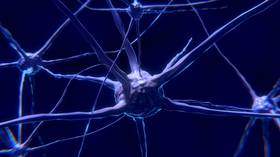A spoonful of sugar? Scientists develop coated ‘nanohybrid’ vehicle for precise drug delivery INSIDE the brain

Researchers at the University of Texas have developed a sugar-coated nanohybrid vehicle which optimizes delivery of targeted medicines directly where they’re needed within the human body without causing collateral damage.
Powerful medicines which show promise in treating particularly nasty illnesses can often inflict collateral damage on other cell types, making medical teams reluctant to deploy them for fear of doing more harm than good.
Among these types of treatments is the antioxidant polyphenol ellagic acid (EA) which can help mitigate some of the worst symptoms of diseases like Parkinson's and Alzheimer's, but with a catch: it is toxic to certain cell types.
Also on rt.com ‘Trojan Horse’: New nanoparticle can prevent heart attacks by 'eating' artery blockages FROM THE INSIDEIn order for this medicine to be effectively deployed where it is needed in the brain to treat neurodegenerative disorders, its toxic potential must be reduced and only its antioxidant abilities used. That’s where Dr. Mahesh Narayan and Dr. Sreeprasad Sreenivasan’s sugar-coated nanohybrid delivery vehicle comes into play.
By surrounding the EA in chitosan, a type of sugar found in the hard outer skeleton of shellfish, the researchers reduced the toxicity of the medicine while enhancing its antioxidant properties.
In addition, chitosan allows for both rapid burst and longer-term, slow-release delivery, making it ideally suited to the task of deploying highly targeted medicine in an extremely sensitive environment of the body.
“This work creates a new type of bio-friendly drug-delivery vehicle made of recyclable materials,” Narayan said.
In other words, a spoonful of sugar really does help the medicine go down, it would seem.
Also on rt.com Mice given ‘night vision’ superpower with simple injection“This platform allows for molecules to be impregnated into the material so that the drug can more specifically target the tumor or other tissue site, thus increasing the beneficial effects of the drug while reducing its negative side effects,” said Robert Kirken, Ph.D., dean of UTEP's College of Science.
The researchers will continue their study in their respective fields, hoping to further optimize medical delivery systems by combining expertise from diverse fields like chemistry, materials physics and quantum materials science.
Think your friends would be interested? Share this story!














